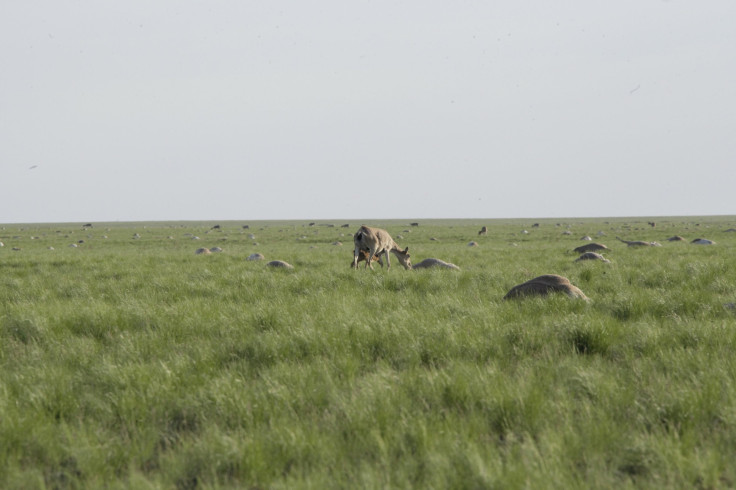Unknown Disease Kills Kazakhstan’s Rare Saiga Antelopes, Scientists Baffled

A mysterious and fast-moving disease has killed tens of thousands of saiga antelopes in central Kazakhstan in recent days, leaving scientists baffled over the “catastrophic” event. More than 120,000 of the endangered animal -- over a third of its global population -- have been confirmed dead in the region in the past two weeks, conservationists have found.
Experts at the United Nations said that a combination of environmental and biological factors is responsible for the mass deaths of the rare antelopes, but the exact cause of the disease's outbreak is still unknown. Primarily mothers and calves are among the carcasses, and not a single animal survived in the affected herds, scientists said in a report Thursday by the United Nations Environment Programme (UNEP).
“A one hundred percent mortality for the herds affected is extraordinary,” Richard Kock, a professor at the Royal Veterinary College in London, told the Agence France-Presse (AFP). “We are dealing with creatures that have fairly low resilience.”
The scientists said, based on preliminary analysis of information, that two secondary pathogenic bacteria are contributing to the rapid and widespread deaths of the critically endangered antelopes, whose ancestors have inhabited the region since the Ice Age. The bacteria are deadly to an animal only if its immune system is already weakened. But the hunt for the fundamental cause of the mass mortality still continues.
“Unseasonal wetness may have been something that lowered their immunity to infection but until we do more analysis we will not know anything for sure,” AFP quoted Steffen Zuther of Kazakhstan's Altyn Dala Conservation Initiative as saying.
A recent aerial survey estimated that the saiga antelope population in the country numbered about 250,000 prior to the mass die-off, which has halved the total population of the animal. Scientists fear that final estimates may extend beyond 120,000 dead saigas as the counting of carcasses by authorities continues.
“This loss is a huge blow for saiga conservation in Kazakhstan and in the world, given that 90% of the global saiga population is found in our country,” Erlan Nysynbaev, vice minister of Kazakhstan's agriculture ministry said in a statement in the UNEP report.
© Copyright IBTimes 2024. All rights reserved.






















